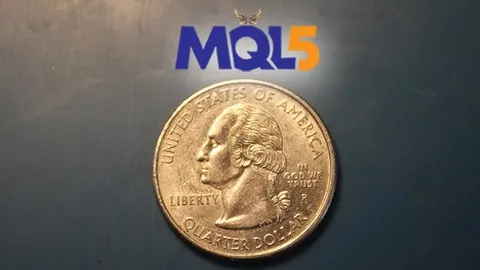Mql5 Projects: Code A Quarters Theory Strategy In Mql5
Published 2/2025
MP4 | Video: h264, 1920x1080 | Audio: AAC, 44.1 KHz
Language: English | Size: 2.11 GB | Duration: 3h 38m
Published 2/2025
MP4 | Video: h264, 1920x1080 | Audio: AAC, 44.1 KHz
Language: English | Size: 2.11 GB | Duration: 3h 38m
A comprehensive guide to developing a complex algorithmic trading system that implements the Quarters in MQL5
What you'll learn
How to code a Quarters Theory expert advisor
How to use a weighted average exit for cost averaging
How to use linear lot increments for faster cost averaging exits
How to automatically calculate Forex Round Numbers
Requirements
Basic MQL5 Competence
Description
One of the most fundamental concepts that traders use to analyze and predict market movements is the Quarters Theory. The Quarters theory was publicized by Illian Yotov in his book, the Quarters theory, a revolutionary way to trade. This theory revolves around the idea that markets tend to move in quarters, breaking into distinct price zones that traders use to identify key points of support, resistance, and overall market direction. By understanding the Quarters Theory and how these price zones form, traders can develop more informed strategies and improve their chances of success in the currency markets.In this course, our aim is to build an expert advisor based on the Quarters Theory in MQL5. We will start by creating a Quarters Theory indicator, helping you learn how to identify these key price zones using programming tools. I'll walk you through the logic of the code, ensuring you understand each step of the process.In our strategy, we’ll focus on trade management techniques that help minimize risk. Unlike methods that rely on increasing lot sizes exponentially, such as Martingale, our system will use a linear approach to gradually adjust position sizes. This allows for faster exits while still managing risk in a controlled way through multi-level entries at different price zones.If you're still familiarizing yourself with MQL5, don't worry. As long as you understand the basics, this course is perfect for you. I'll patiently guide you through every step, ensuring you grasp the concepts behind each line of code. By the end of this course, you'll have gained the skills necessary to code similar trading models based on the Quarters Theory and will better appreciate how understanding market zones can help shape your own trading strategies.So, hit the enroll button now and join me on this exciting journey of coding a Quarters Theory-based trading strategy using the MQL5 algorithmic trading language!
Overview
Section 1: Introduction
Lecture 1 The Quarters Theory
Section 2: Coding the EA
Lecture 2 General Parameters
Lecture 3 Setting the calculation interval
Lecture 4 Calculating Round Numbers
Lecture 5 Drawing Round Number Lines
Lecture 6 Creating Class Objects
Lecture 7 Counting the Number of Trades
Lecture 8 Getting the Position Size
Lecture 9 Entering Limit Orders
Lecture 10 Updating Price Levels
Lecture 11 Modifying Pending Orders
Lecture 12 Adding a Trailing StopLoss
Lecture 13 Getting the Next Trade Level
Lecture 14 Executing Cost Averaging Trades
Lecture 15 Modifying Cost Averaging Orders
Lecture 16 Calculating The Average Price
Lecture 17 Adding a Trailing Take Profit
Lecture 18 Detecting Triggered Orders
Lecture 19 Putting It All Together
Lecture 20 Testing the Expert Advisor
Section 3: Conclusion
Lecture 21 Conclusion
Anyone willing to learn how to code a support and resistance expert advisor,Anyone willing to learn how to calculate Round number levels automatically with MQL5,Anyone willing to learn how to use weighted average exits in cost averaging,Anyone willing to learn to use linear lot increments for faster cost averaging exits



